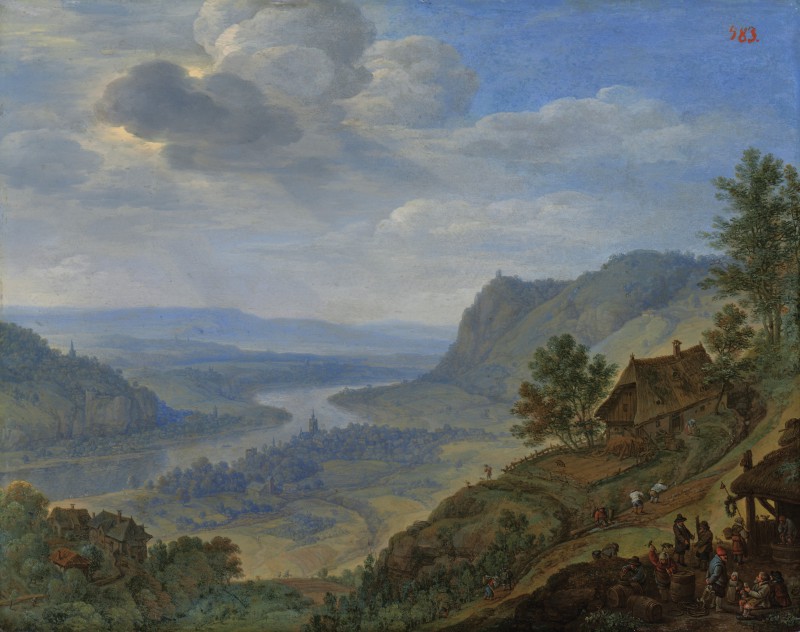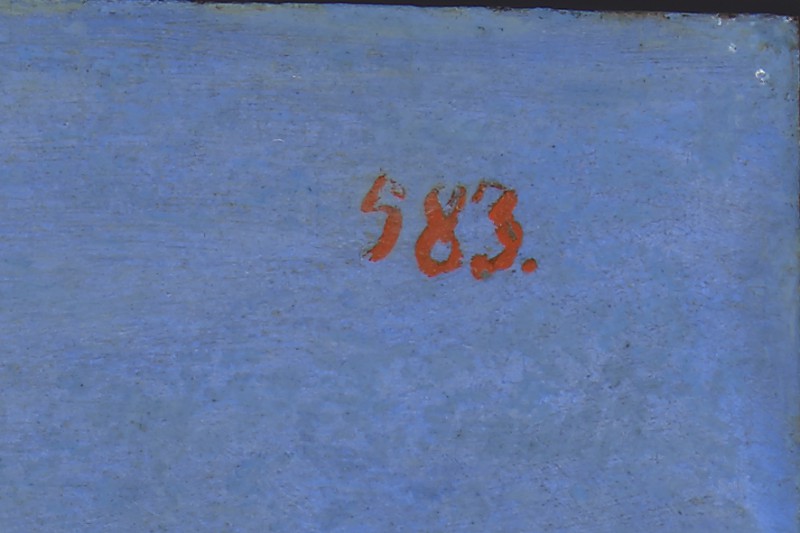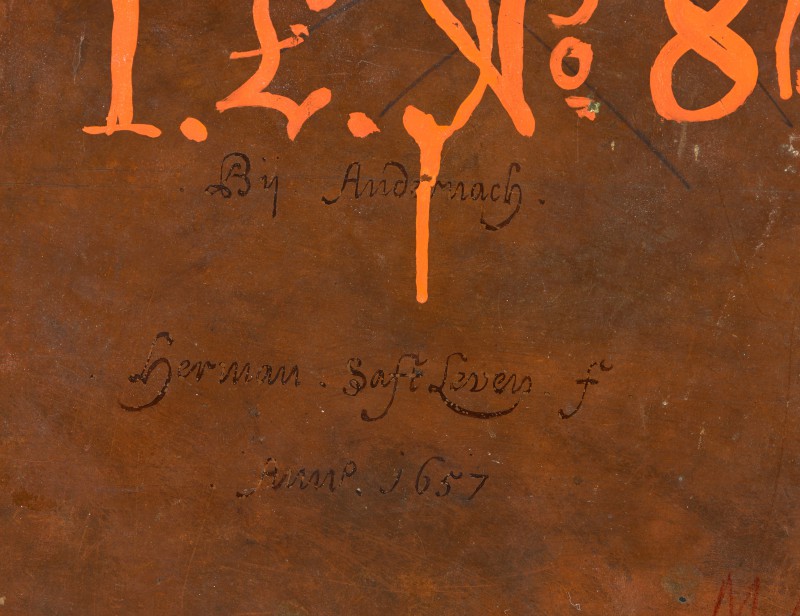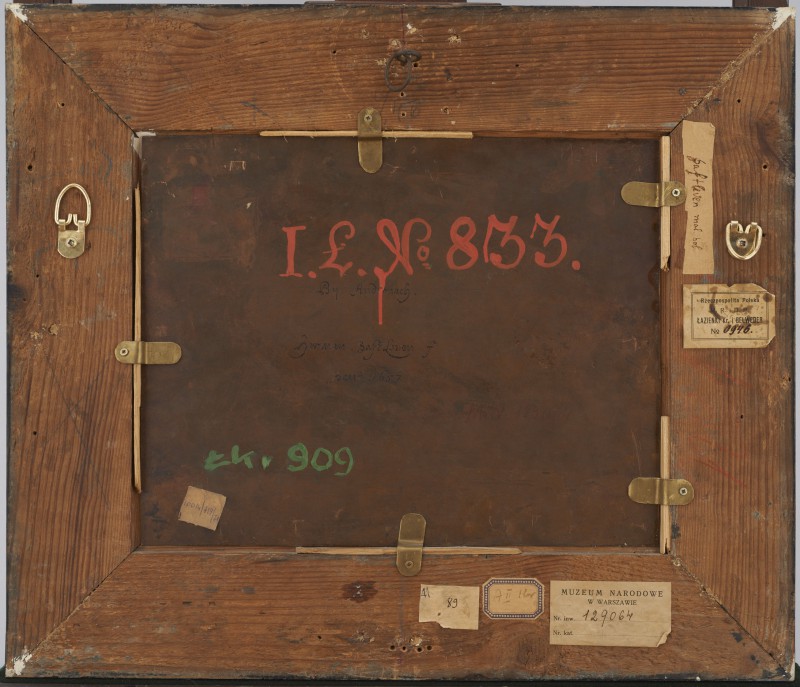View of Panoramic Rhine Landscape (‘View of The Rhine near Andernach’)
- Date
- 1657
- Object type
- painting
- Technique
- oil
- Material
- copper
- Dimensions
- 26,3 x 30,7 cm
- Acquisition date
- 1779
- Location
- The Palace on the Isle - Portrait Room, ground floor
- Marks and inscriptions
- signed and dated HSL 1657 (HSL interlaced) bottom left, and Bij. Andernach./ Herman. Saft Leven. f/ Anno. 1657, on the back
- Place of Origin
- Germany (Europe)
- Owner
- The Royal Łazienki
- Museum number
- ŁKr 909
This painting, together with its pendant (also a view of the Rhine), was bought for the Stanisław August collection from the Berlin art dealer, Jacques Triebel, in 1779. The pendant … was sold in 1821 by the king’s niece, Maria Teresa Tyszkiewicz, to a certain Antonio Fusi and taken to Russia … ; its present whereabouts are unknown. …
Saftleven began painting landscapes in the mid-1630s: initially serene Italianate views, as well as fantastical mountainous landscapes; from the mid-1640s—depicting native Dutch scenery, and from early 1650s, after visiting Eastern Netherlands and the Rhine area—landscapes depicting the Rhine Valley. These were real—although sometimes difficult to locate—‘Rheinlandschaften’ or only inspired by the landscape of the Rhine valley ‘Rheinphantasien’ (as Wolfgang Schulz classified them), of which the Łazienki painting is an example.
It shows a bird’s eye view of the Rhine valley suffused in sunlight … . The foreground, as is often the case in Saftleven’s landscapes, has the character of a genre scene with human abodes and figural staffage. … The landscape is traditionally divided into three zones, however, it differs from the works of landscapists of the first quarter of the 17th century: the colours are more subdued, closer to nature than to artistic creation. As indicated by the artist’s inscription on the back of the painting, the scene was supposed to show the environs of Andernach in the Rhine Valley, however, as Wolfgang Schulz pointed out, elements of this town’s topography cannot be found here (W. Schulz, Herman Saftleven 1609–1685. Leben und Werke. Mit einem kritischen Katalog der Gemälde und Zeichnungen, Berlin–New York 1982, p. 36) … . The only—very perfunctory—reference to Andernach that can be discerned in the Łazienki landscape is the outline of a round tower visible on the left bank of the river, in the distance—which may be an allusion to the famous ‘Der Runde Turm’ which towers over the town (however, surrounded by trees and not buildings, as it is in reality). …
Stanisław August had only two paintings by Herman Saftleven: the one discussed above and its lost pendant. … [D. Juszczak, H. Małachowicz, The Stanisław August Collection of Paintings at the Royal Łazienki. Catalogue, Royal Łazienki Museum, Warsaw 2016, no. 93, pp. 342–345.]







